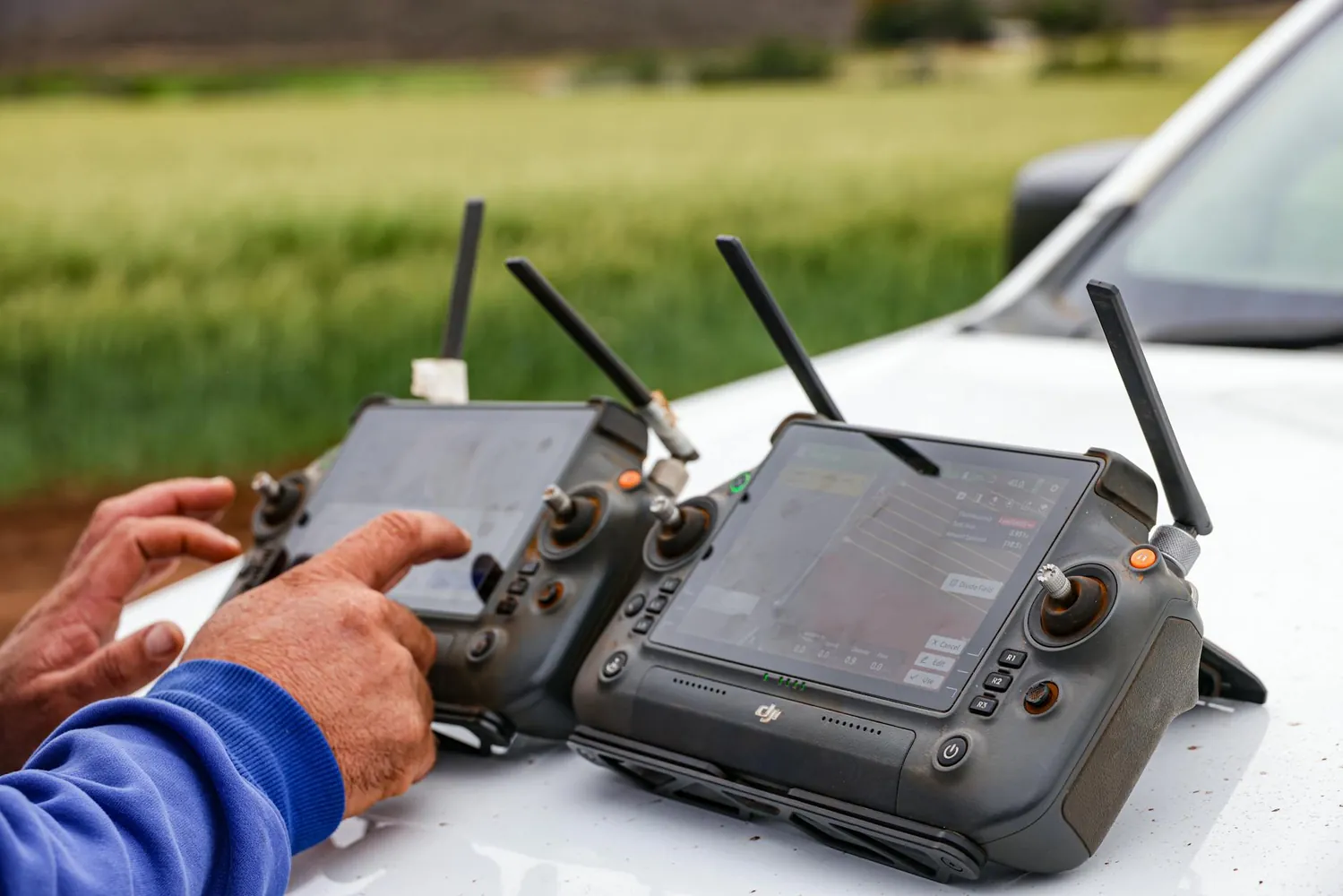How Farmers Can Leverage Drone Technology for Better Crop Monitoring

The Rise of Drones in Agriculture
In recent years, the agricultural sector has witnessed a significant technological shift with the integration of drone technology. Drones, or Unmanned Aerial Vehicles (UAVs), have emerged as a pivotal tool for farmers, offering new ways to monitor crops and enhance productivity. The global agriculture drone market size was valued at approximately $1 billion in 2020 and is expected to grow significantly, reflecting the increasing adoption of this technology.

Drones provide a unique vantage point over large tracts of land, allowing for detailed analysis and monitoring that were previously impossible or required costly satellite imaging. They can cover extensive areas quickly, providing real-time data that can inform decision-making processes on farms of all sizes.
Benefits of Using Drones for Crop Monitoring
Integrating drones into farming practices offers numerous advantages:
- Cost Efficiency: Drones can reduce the need for manual labor and expensive aerial imaging services. The ability to quickly assess crop health means farmers can address issues before they escalate, potentially saving thousands of dollars in lost yields.
- Precision Farming: With precision agriculture, drones can provide data on crop stress, plant health, growth rates, and more. This information is crucial for optimizing inputs like water, fertilizers, and pesticides.
- Time Savings: Traditional methods of crop monitoring are time-consuming. Drones streamline this process, allowing farmers to focus on implementing solutions rather than spending extensive time gathering data.
Real-Time Data Collection
Drones equipped with multispectral sensors can capture data in various wavelengths beyond visible light, such as infrared, which is valuable for assessing plant health. These capabilities allow for:
- Early Detection: Identifying stressed plants before symptoms appear to the naked eye.
- Pest and Disease Monitoring: Detecting patterns that may indicate infestations or disease spread.
Choosing the Right Drone for Your Farm
Selecting the right drone technology depends on several factors. Here is a framework to guide your choice:
1. Assess Farm Size and Terrain
The size of your farm will largely determine the type of drone required. Fixed-wing drones are suitable for large fields due to their long flight times, while multi-rotor drones are better suited for smaller plots with complex terrain due to their maneuverability.
2. Sensor Requirements
Consider what you need to measure and monitor. If you’re focusing on NDVI (Normalized Difference Vegetation Index) analysis for plant health, ensure your drone is equipped with appropriate sensors. Thermal cameras might be necessary for irrigation management.
3. Budget Considerations
Drones range from a few hundred to tens of thousands of dollars. Determine your budget and balance it against the features and capabilities you require. Remember that investing in higher-quality equipment can provide more reliable data and longer-term savings.
Integrating Drones into Precision Agriculture Practices
Successful integration of drones into farming requires a structured approach:
Step 1: Plan Your Mission
Define what you want to achieve with each flight. This could be mapping out a new planting area or monitoring crop growth over time. Planning helps maximize the efficiency of drone use and ensures that collected data meets your objectives.
Step 2: Conduct Regular Flights
Regularly scheduled drone flights provide consistent data that can be compared over time. Establishing a routine allows you to detect changes early and respond accordingly.
Step 3: Analyze Data with Software Tools
Use software tools to analyze the data collected by drones. Platforms such as Pix4D or DroneDeploy offer powerful analytics capabilities tailored to agricultural needs. These tools can help interpret NDVI maps, identify problem areas, and suggest actionable steps.
Step 4: Implement Findings
The data is only as good as how you use it. Act on insights gained from drone surveys to adjust irrigation schedules, apply fertilizers precisely where needed, or address pest infestations promptly.
Case Study: Improving Crop Yields with Drones
A midsize corn farm in Iowa implemented drone technology to monitor crop health throughout the growing season. By using drones equipped with multispectral sensors, they detected a nitrogen deficiency early in one section of their field. Adjusting fertilizer application rates based on this data resulted in an increase in yield by over 15% compared to previous years without drone insights.
Challenges and Considerations
Despite their benefits, integrating drones into agriculture does come with challenges:
- Regulatory Compliance: Ensure compliance with local regulations regarding UAV usage, which may include registration requirements and restrictions on flight altitudes.
- Technical Expertise: Operating drones and analyzing their data requires some technical skill. Training or hiring skilled personnel may be necessary.
The Future of Drones in Agriculture
The role of drones in agriculture is likely to expand further as technology advances. The development of AI-powered analytics and improved battery life will enhance their effectiveness and ease of use.
Drones represent a paradigm shift in how farmers manage their lands, offering the potential for increased efficiency and sustainable practices. By adopting these technologies now, farmers can position themselves at the forefront of the next agricultural revolution.
 Modern Knowledge House
Modern Knowledge House